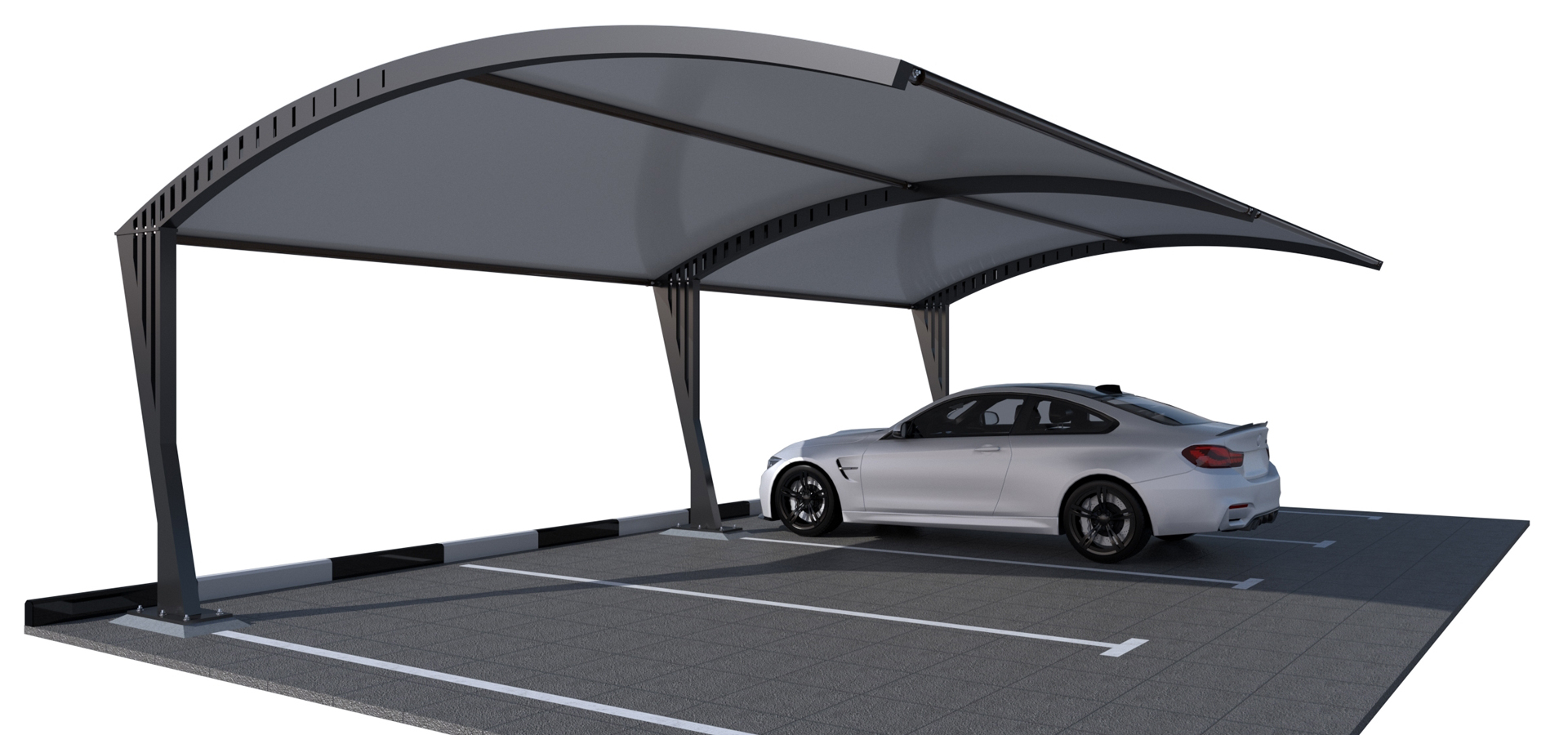When hurricane season starts in Florida, the weather forecast is more than just background noise; it’s something people take seriously. One day you may be enjoying your morning coffee, and the next, you hear about a Category 3 storm in the Gulf with winds reaching 120 mph. For many homeowners, that means rushing to cover vehicles with tarps or trying to find storage at the last minute.
With a wind-resistant aluminum carport, you don’t have to worry. These carports are not just simple shelters for cars, RVs, or boats; they are strong structures designed to handle severe weather and keep your property safe.
Why Strong Wind Protection Matters
In Florida and other coastal regions, extreme weather is no longer an uncommon occurrence. From heavy thunderstorms to hurricanes, wind speeds often climb high enough to damage or destroy poorly built shelters.
- Standard carports may start failing at wind speeds as low as 60–80 mph, meaning even a strong thunderstorm can cause damage.
- Properly engineered aluminum carports can withstand winds of 130–170 mph, comparable to those of a Category 4 hurricane.
That’s why choosing the right material and design is critical if you want your carport to last, and actually protect your vehicles when it matters most.
Why Aluminum Outperforms Other Materials
Although some think steel is the strongest choice, aluminum offers exceptional benefits in areas prone to storms.
- Corrosion Resistance:Unlike steel, aluminum won’t rust. Its natural oxide layer makes it ideal for humid, salty coastal environments.
- Flexibility Under Stress:Instead of snapping or cracking, aluminum bends slightly and returns to shape. This flexibility makes it more resilient during high winds.
- Lightweight Strength:Aluminum is lighter than steel, which reduces uplift forces during storms while still providing comparable strength when engineered correctly.
Together, these qualities make aluminum carports the smarter choice for long-term durability.
How Wind-Resistant Aluminum Carports Work
The secret to a strong carport isn’t just the material; it’s in the engineering.
Aerodynamic Design
A hurricane-ready carport uses sloped or curved roofing to reduce wind resistance. Rounded edges and smart angles allow wind to flow over and around the structure, rather than creating dangerous pressure points.
Load Distribution
Wind puts three main pressures on a carport: uplift (pulling the roof up), sideways push, and sudden gusts. Strong aluminum carports are designed to spread these forces evenly, so they don’t collapse.
Anchoring Systems
Even the strongest carport fails if it isn’t properly anchored. Professional installations typically utilize deep concrete footings or helical piers that extend into stable soil. These anchoring methods keep the carport firmly in place, even in hurricane-force winds.
Real-World Performance in Storms
Trusted aluminum carport makers build them to handle winds of 130–170 mph, strong enough for Category 3 and 4 hurricanes. After significant storms, aluminum often performs better than steel because it resists rust and bends instead of breaking. Homeowners with aluminum carports report fewer repairs, lower insurance costs, and more peace of mind than those with standard carports.
The Role of Professional Installation
DIY kits might look easy enough to build, but the strength of a storm also depends on how they are installed. For example, if you have footings that are not deep enough, anchors that are not strong enough, or bolts that are not tight, there is a good chance your entire carport will be compromised. A professional installer knows the correct depth for the anchors, installs them correctly, tightens all connections, follows (and can explain) wind speed safety codes, and has placed the carport to maximize its strength.
Maintenance for Long-Term Protection
Even the best carport needs basic care to remain storm-ready for decades. Luckily, aluminum makes this simple:
- Annual Inspections:Check anchor bolts, joints, and roof panels for wear.
- Cleaning:Wash away salt, dirt, and debris that may collect after storms.
- Tightening Bolts:Ensure that anchors and fasteners remain securely in place.
- Post-Storm Checks:Always inspect after severe weather to catch hidden damage early.
With these steps, a premium aluminum carport can last for many years, continuing to withstand strong winds year after year.
The Investment That Pays Off
Some homeowners hesitate at the upfront cost of a hurricane-ready aluminum carport. But consider the alternative:
- New vehicle replacement costs average $ 47,000 or more.
- Hail or wind repairs can range $3,000–$8,000 per incident.
- A collapsed carport can cost between $8,000 and $15,000 to replace.
In contrast, investing in a well-built aluminum carport not only protects your vehicles but also boosts property value, lowers insurance rates, and pays for itself in just a few years.
Customization for Every Property
CH Evans Aluminum carports can be tailored for RVs, homes, or storage, with designs adjusted for wind, soil, and style. Built for storms, they offer strength, durability, and peace of mind, protecting your vehicle and property from the elements.
- Hillsborough County
Tampa, Brandon, Riverview, Plant City, Valrico, Temple Terrace, Seffner, Apollo Beach, Ruskin - Pinellas County
St. Petersburg, Clearwater, Largo, Palm Harbor, Dunedin, Tarpon Springs, Seminole, Safety Harbor, Gulfport - Manatee County
Bradenton, Palmetto, Lakewood Ranch, Ellenton, Holmes Beach, Anna Maria, Parrish - Hardee County
Wauchula, Bowling Green, Zolfo Springs - Polk County
Lakeland, Winter Haven, Haines City, Bartow, Auburndale, Lake Wales, Davenport, Mulberry

